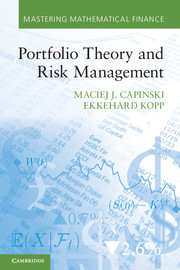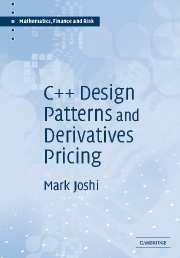Introduction to Mathematical Portfolio Theory
In this concise yet comprehensive guide to the mathematics of modern portfolio theory the authors discuss mean-variance analysis, factor models, utility theory, stochastic dominance, very long term investing, the capital asset pricing model, risk measures including VAR, coherence, market efficiency, rationality and the modelling of actuarial liabilities. Each topic is clearly explained with assumptions, mathematics, limitations, problems and solutions presented in turn. Joshi's trademark style of clarity and practicality is here brought to classical financial mathematics. The book is suitable for mathematically trained students in actuarial studies, business and economics as well as mathematics and finance, and it can be used for both self-study and as a course text. The authors' experience as both academics and practitioners brings clarity and relevance to the book, whilst ensuring that the limitations of models are highlighted.
- Tailored to the CT8 actuarial syllabus in the UK
- Extensive collection of problems with detailed solutions
- Authors' exposition is clear and succinct
Product details
No date availableHardback
9781107042315
325 pages
234 × 155 × 19 mm
0.64kg
30 b/w illus. 170 exercises
Table of Contents
- Preface
- 1. Definitions of risk and return
- 2. Efficient portfolios: the two-asset case
- 3. Portfolios with a risk-free asset
- 4. Finding the efficient frontier – the multi-asset case
- 5. Single-factor models
- 6. Multi-factor models
- 7. Introducing utility
- 8. Utility and risk aversion
- 9. Foundations of utility theory
- 10. Maximising long-term growth
- 11. Stochastic dominance
- 12. Risk measures
- 13. The Capital Asset Pricing Model
- 14. The arbitrage pricing model
- 15. Market efficiency and rationality
- 16. Brownian motion and stock price models across time
- Appendix A. Matrix algebra
- Appendix B. Solutions
- References
- Index.











